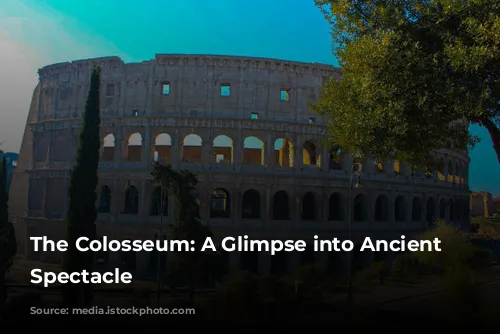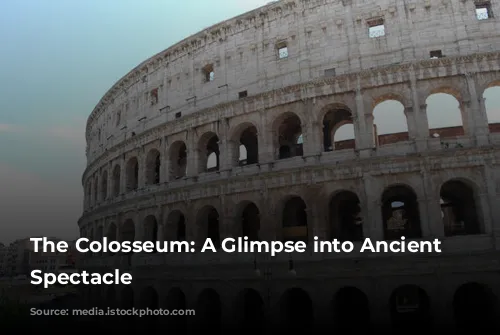The Colosseum, also known as the Flavian Amphitheatre, stands as a towering monument to the might of the Roman Empire. This colossal arena, the largest and most impressive in the Roman world, is a testament to the architectural genius of the Romans. Emperor Vespasian, the founder of the Flavian dynasty, initiated its construction, and his son Titus inaugurated it with a grand opening ceremony in 80 AD.
A Spectacle Fit for an Empire
The Colosseum’s inauguration was a lavish affair, lasting an incredible 100 days. The people of Rome were treated to a feast of gladiatorial combat, exotic animal hunts, and thrilling displays of human skill and courage. Imagine the sheer scale of these events – the historian Suetonius recorded that over 5,000 animals were killed during the opening festivities. One of the most awe-inspiring events was the naumachia, staged in the arena transformed into a vast pool. These naval battles recreated legendary maritime conflicts, complete with warships and trained sailors.
A Name Steeped in History and Legend
But why is this grand structure known as the Colosseum? The name first appeared in a prophecy by the Venerable Bede, a renowned medieval monk. He famously stated, “Rome will exist as long as the Colosseum does; when the Colosseum falls, so will Rome; when Rome falls, so will the world.” The origin of this name likely stemmed from the towering statue of the Emperor Nero, known as the “Colossus,” which once stood next to the amphitheatre. This colossal bronze statue, reaching a height of 35 meters, was eventually destroyed, leaving behind only whispers of its grandeur.
A Masterpiece of Roman Engineering
The Colosseum, originally gleaming white, was constructed from massive travertine stone slabs. Its elliptical shape allowed for maximum spectator capacity, a hallmark of Roman ingenuity. This awe-inspiring edifice consisted of four tiers, each with a series of arches. The first three tiers boasted 80 arches each, adorned with majestic statues. The Colosseum’s construction was a testament to Roman engineering prowess, taking just ten years to complete.
The Secret of Roman Strength: The Arch
The Romans were masters of the arch, a key element in their architectural vocabulary. This structural marvel enabled them to distribute the weight of their massive constructions efficiently, achieving remarkable stability. We can see the influence of the arch throughout Roman architecture, from grand aqueducts to the Colosseum itself. Think of the Colosseum as a series of stacked aqueducts, each level supporting the one above.
From Arena to Quarry: The Colosseum’s Transformation
Today, we see only the skeleton of the once-glorious arena. The once-imposing brick walls have been ravaged by time, with three-fifths of the outer structure missing. The Colosseum’s stones were stripped bare, serving as a quarry during the Middle Ages. Popes used the Colosseum’s stones to build grand palaces like Barberini Palace and Piazza Venezia, even contributing to the construction of St. Peter’s Basilica. The holes visible in the Colosseum’s columns are a testament to this period of plunder, marking the removal of lead and iron used to fasten the marble blocks.
A Stadium Fit for a King and His People
The Colosseum’s capacity was staggering, able to accommodate up to 70,000 spectators. The tiers of seats were meticulously designed, providing an unobstructed view from every angle. Admission was free for all Roman citizens, but seating was strictly divided by social status, similar to modern theaters. The commoners occupied the upper seats, separated by gender. As one descended towards the arena, the higher the social status of the spectators. Senators, vestals, priests, and, of course, the emperor, held the most prestigious seats in the front row.
Harnessing the Power of the Sun: The Velarium
The Romans understood the importance of comfort even during grand events. The Colosseum provided protection from the sun through an ingenious system known as the “Velarium.” This massive linen tarp was stretched across the arena, suspended by ropes, winches, and wooden poles that circled the top of the outer wall. Moving the Velarium required the synchronized efforts of 100 sailors from the Imperial fleet, their movements coordinated by the beat of a drum.
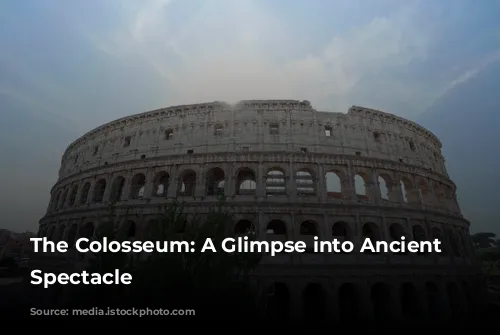
The Underground World of the Colosseum
Beneath the arena floor, a network of subterranean chambers housed the intricate machinery used to orchestrate the spectacles. Two underground levels held lifts, hoists, and counterweights, remnants of which are still visible today. These were the special effects of ancient Rome, allowing for the dramatic appearance of animals and gladiators, who would burst through trapdoors, shrouded in a cloud of white dust, to the astonishment of the audience.
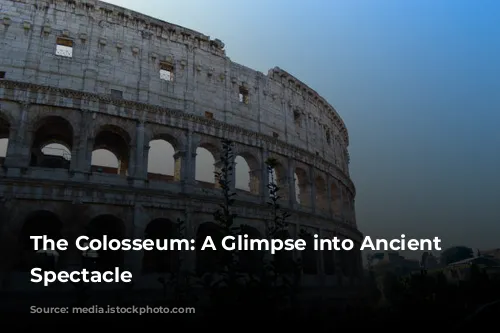
Gladiators: Heroes of the Arena
The heart of the Colosseum’s spectacle was the gladiators. The word “gladiator” comes from “gladius,” the short sword used by legionaries. These warriors were not always forced to fight. Often, they were prisoners of war who chose combat over slavery. They fought for a limited period, after which they could earn their freedom, often having saved a substantial sum of money. Others were drawn to the arena by the promise of fame and fortune.
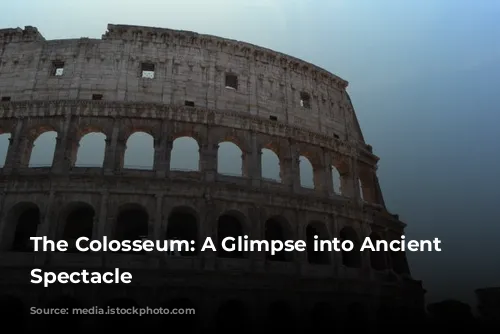
A World of Blood and Spectacle
The gladiatorial combats were a spectacle of skill, brutality, and suspense. The Colosseum was a stage for a variety of gladiatorial types, each equipped with distinct weaponry and fighting styles. The “Retiarius,” armed with a net, trident, and knife, faced off against the heavily armored gladiator. The fate of the defeated gladiator rested in the hands of the emperor, who could grant mercy or condemn him to death with a simple gesture – a thumbs up for life, a thumbs down for death.
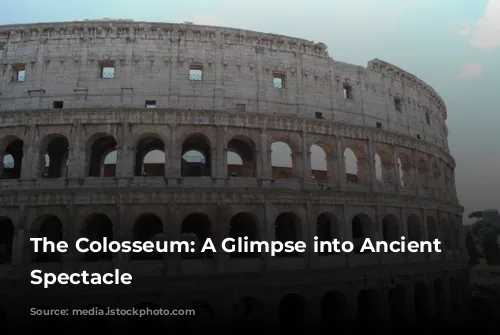
Beyond the Arena: The Legacy of the Colosseum
The Colosseum fell into disuse as the Roman Empire declined. Its massive walls became home to hermits, hospitals, and even a cemetery. In the Middle Ages, the Colosseum became an architectural quarry, providing building materials for other grand structures. However, its historical significance was recognized, and Pope Benedict XIV declared it a sacred monument dedicated to the Passion of Christ, marking it with a cross.
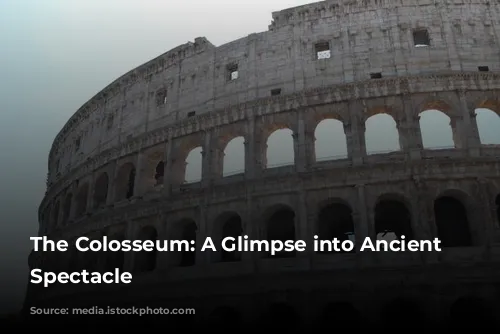
A Ghost of Ancient Rome: The Colosseum Today
Today, the Colosseum stands as a haunting reminder of a bygone era. Its weathered walls whisper tales of the gladiators who fought, the emperors who ruled, and the people who cheered or gasped in horror. It remains a testament to the power and grandeur of the Roman Empire, a symbol of ancient Rome’s enduring legacy.
